
32+ Sample Baptism Certificate Templates
Baptismal record is important to any person being given an initiation in becoming a member of their selected religion. Baptism…
May 25, 2018
Being part of a choir is actually something that requires discipline and commitment. Discipline in a way that you will need to constantly train yourself on how to blend in with the group not only as a person but also as a singer. Regardless of how good of a singer you are, if you don’t know how to listen to your fellow choir members’ voices and properly incorporate your own, then the entire performance would end up chaotic. Singing in a choir is very different from singing by yourself, you will really need to listen to the others and make sure that your voice harmoniously blends in with theirs.
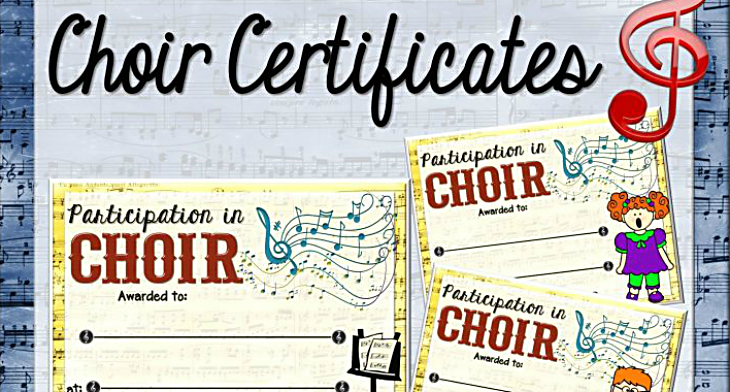
You will also need to be committed when being a choir member, you will need to show up during meetings, practices, and presentations. This is why for those choir members who have been highly dedicated to the group, they will eventually be given a certificate to acknowledge their participation in the group. As a choir group leader, honoring your members with a certificate of participation will help boost their self-esteem and motivate them to participate in even more choir activities. Below is a collection of free templates that you can download to create your own certificate of participation.
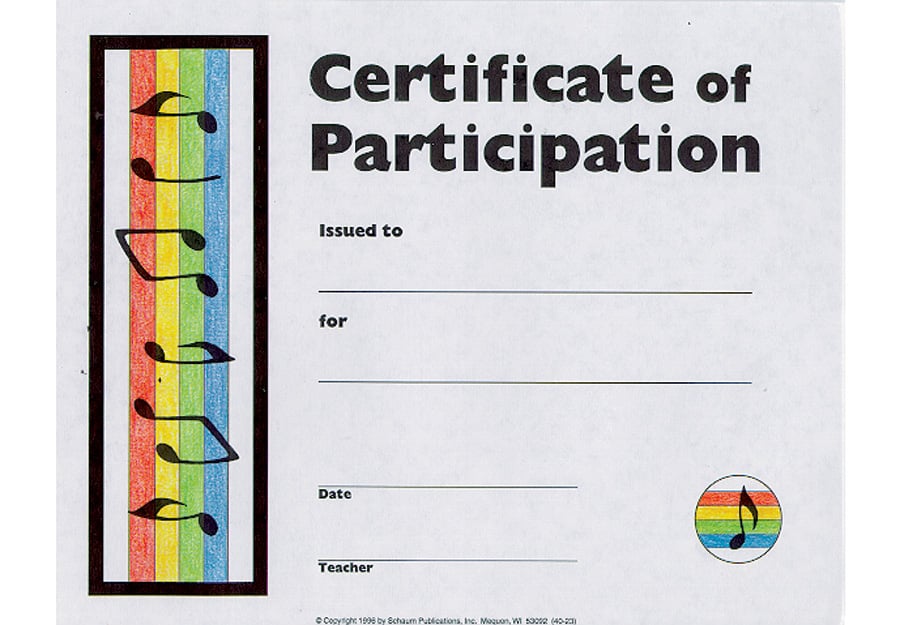 musicmotion.com
musicmotion.comFor those who like a colorful and lively design on their certificates, the sample template above may be perfect for you. And the added texture on the colors that make it resemble crayon marks, which helps enhance the quality of this certificate template.
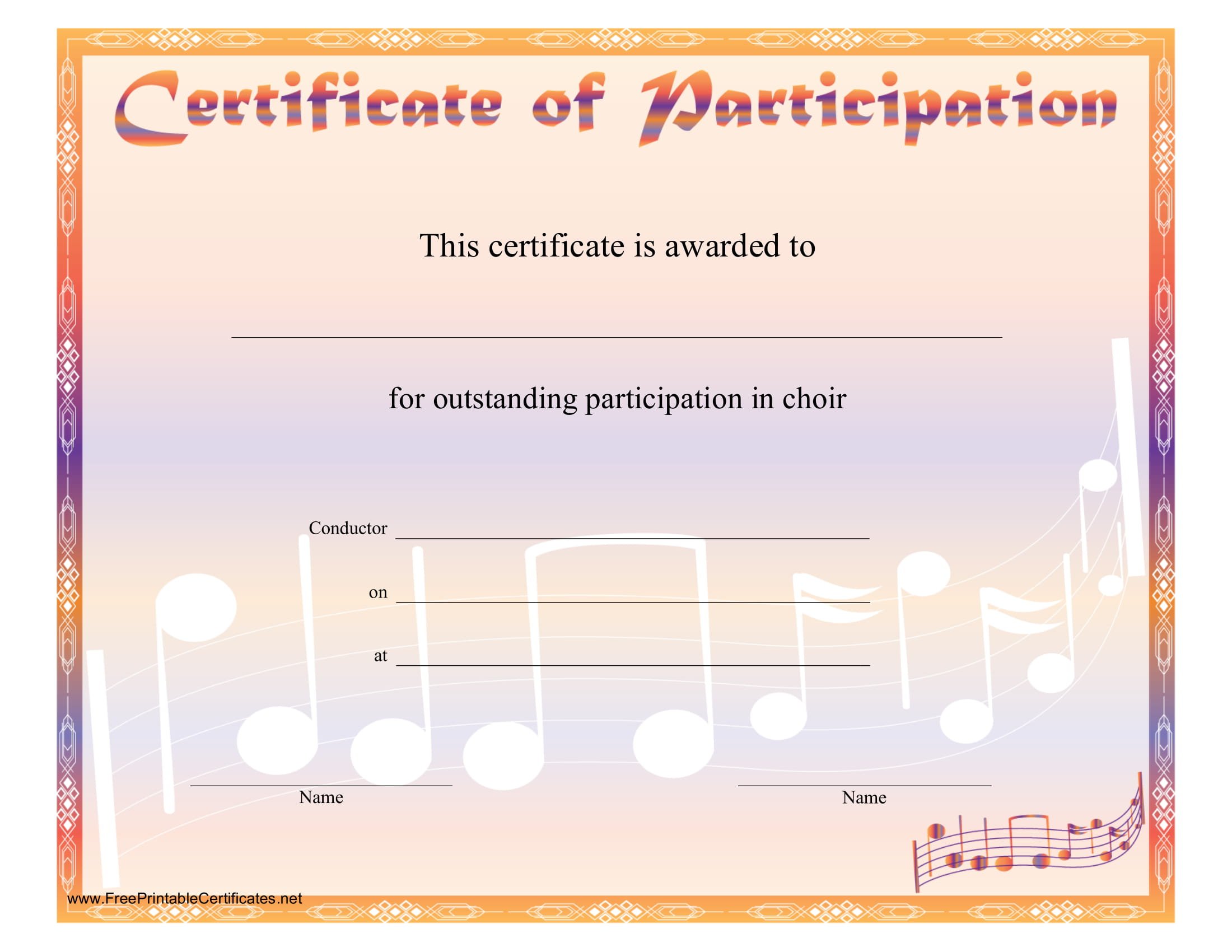 freeprintablecertificates.net
freeprintablecertificates.net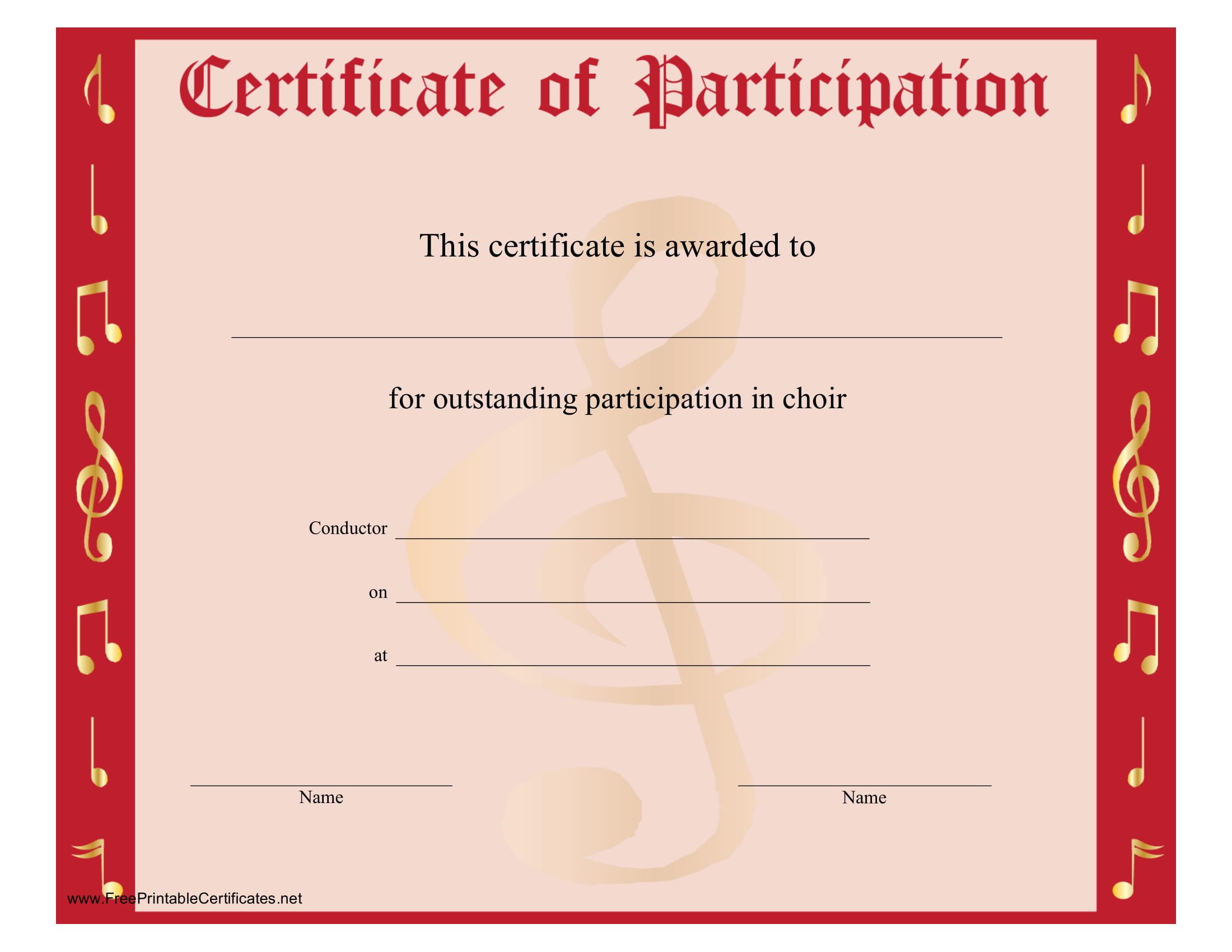 freeprintablecertificates.net
freeprintablecertificates.netIn music, the clef is a symbol that is used to indicate the pitch or key of the notes. It is placed at the beginning part of the stave. There are three different clefs in music: the G-clef, C-clef, and the F-clef. For the certificate template above, the background of the design has a huge semi-opaque illustration of the G-clef, and the left and right borders contain illustrations of the G-clef and other note symbols.
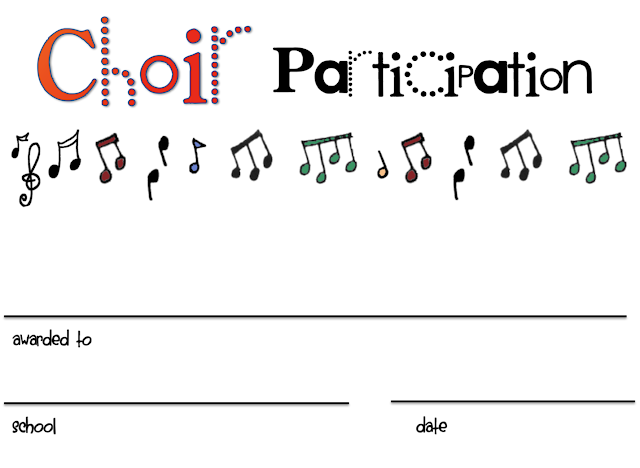 groups.diigo.com
groups.diigo.com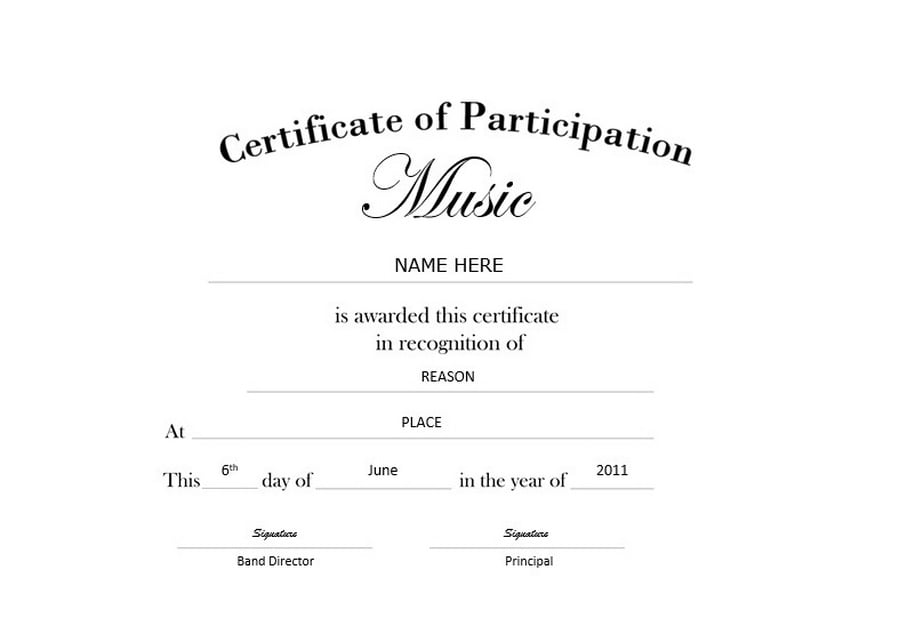 geographics.com
geographics.comIf you prefer a more simplistic design for your certificate of participation, you may want to go with the printable certificate template above. This template heavily leans of minimalism, and contains only text over a completely solid white background.
 tenunstore.com
tenunstore.com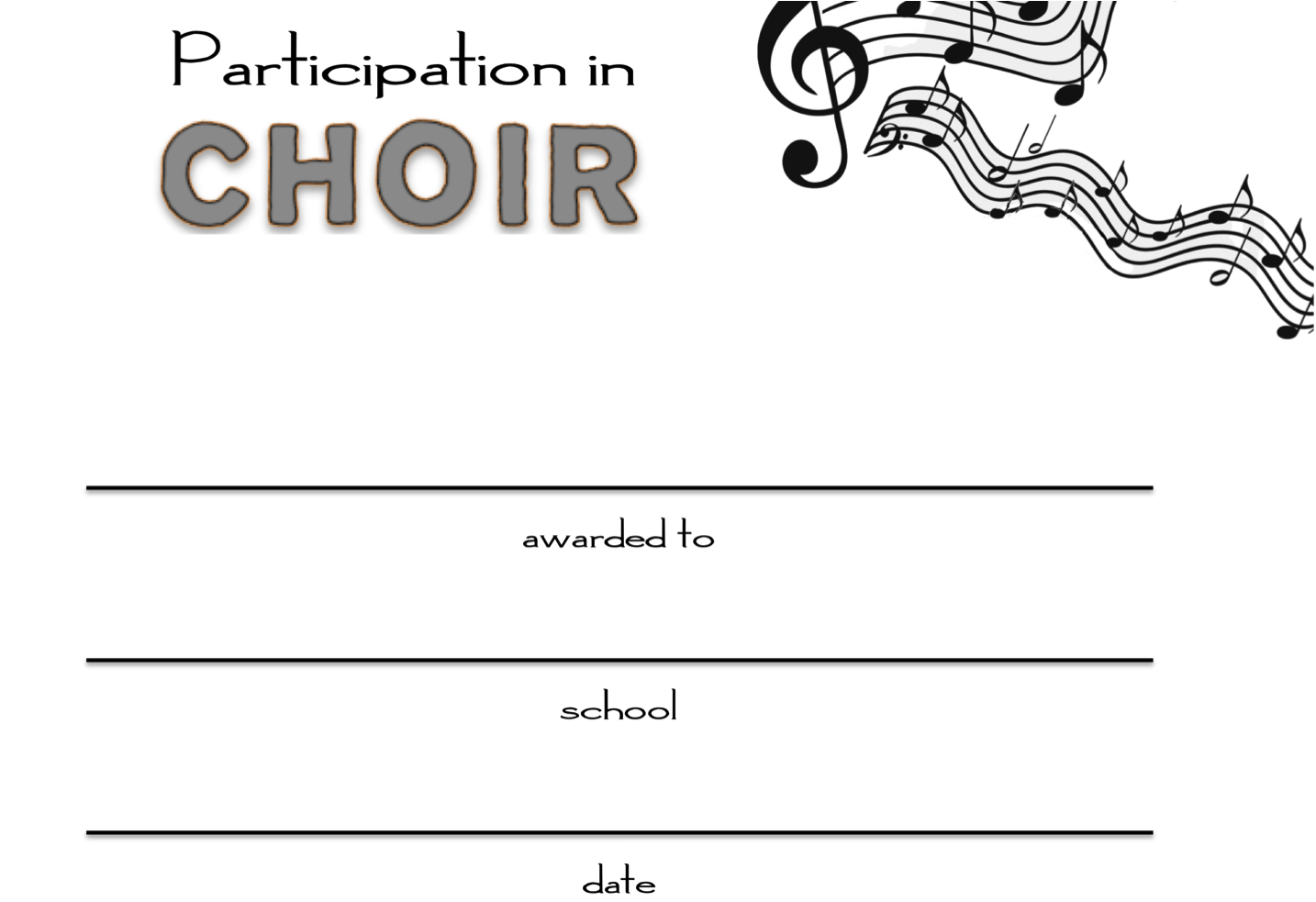 tenunstore.com
tenunstore.comHere is another minimalist certificate of participation template that you may also be interested in, but unlike the previous one, this certificate template also has a few graphical elements added to keep it from looking too bland.
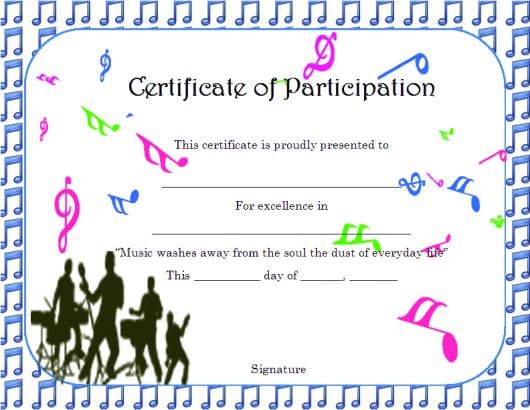 demplates.com
demplates.com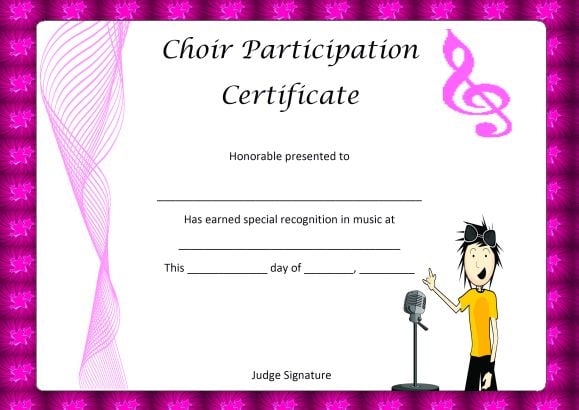 demplates.com
demplates.comYou are probably asking right now why people enjoy joining a choir. There are actually various reasons for that, they may have a passion for singing, or they probably need an outlet that they can go to after a tiring day at work. Whatever the reason may be, here are some benefits that you may get if you join a choir.
To those who have been living under a rock for some time, a choir is composed of different voice types and ranges that will have to harmonize in order to produce such heavenly music. Below, we will be discussing the types of voices just for the sake of those who are unfamiliar, starting with the female voice types.
Now that we’ve covered the three main types of female voices, let’s now talk about the male voice types.

Baptismal record is important to any person being given an initiation in becoming a member of their selected religion. Baptism…

Certificates help prove the authenticity of any achievement, completion, award, design, and other professional creations. Our Word certificate templates may…

On completion of a certain task or project, usually, a certificate is awarded to acknowledge it. It is a recognition…

For any insurance company, they can take the insurance certificate template to be presented in their clients as the copy…

You finally became parents. After filling out the birth certificate template given to you, what is the next step? Christening…

A death certificate is a document certifying a person’s passing, documented by a medical practitioner and issued by the county…

Retirement appreciation certificate is the certificate that is presented to a retired person or the person who will be retiring…

Feeling that you want to further your studies and you do not know where to get financial assistance. You can…

These formats are considered to be more formal than the unpopular formats. A good Diploma certificate templates has to mention…